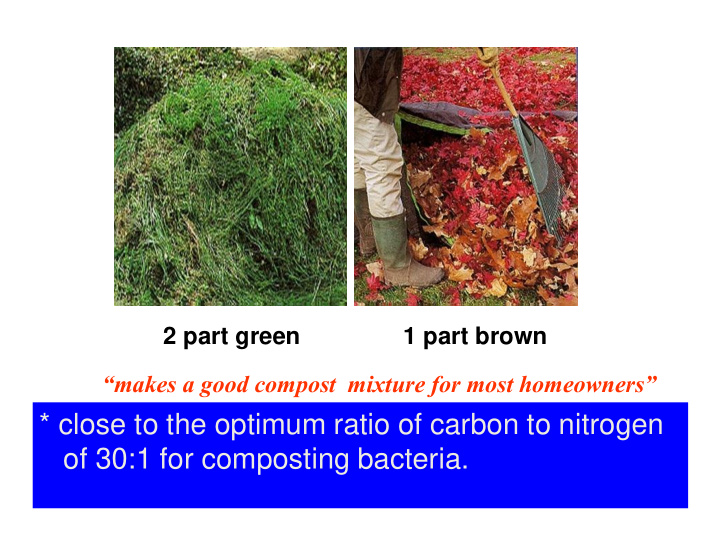



2 part green 1 part brown “makes a good compost mixture for most homeowners” * close to the optimum ratio of carbon to nitrogen of 30:1 for composting bacteria.
IMPORTANT NOTE: An optimal C:N (carbon:nitrogen) balance is not critical to successful passive composting.
DO NOT COMPOST foods with oils or fats dairy & meat products – peanut butter – butter – bones – salad dressing – cheese – margarine – chicken – vegetable oils – fish scraps – mayonnaise – lard – – meat scraps – milk – sour peels – yogurt Uof WI, PUBL-SW-182 93
NO pet wastes! • meat eating animals (cats, dog) & birds - manure contain pathogens (disease organisms) which can be transmitted to humans • grass-eating mammals (cows, horses, sheep, etc.) - stabilized, commercially processed manure does not have pathogens which can be transmitted to humans - can be used in compost. Uof WI, PUBL-SW-182 93
DO COMPOST – grapefruit – lettuce fruits and vegetables: – onion peels – apples (peels and core) – orange peels – cabbage – pears – carrots – celery – pineapple – coffee grounds – melon rinds – egg shells? – potatoes – pumpkin shells – squash – tea leaves – tomatoes – turnip leaves Uof WI, PUBL-SW-182 93
WEEDS Another nitrogen-rich material is fresh weeds. EXCEPTIONS: - remove seed heads - don’t add perennials until their roots are fully dried out
MAIN CONCERNS WHEN HOT COMPOSTING: • volume • surface area • moisture • aeration • temperature
INCREASE SURFACE AREA • chopping materials increases the surface area for bacteria to feed on • greatly speeds the composting process
MOISTURE CONTENT To Dry To Wet
Maintain moisture to level similar to a damp sponge
Pile aeration Getting air to your work force • Turning the pile mixes • Turning tools can make the fresh air into the pile job easier
Turn the compost pile when: - the temperature cools down - there is a bad odor - rotten egg smell
Pile aeration Getting air to your work force • Turning the pile mixes • Turning tools can make the fresh air into the pile job easier
Turn the compost pile when: - the temperature cools down - there is a bad odor - rotten egg smell
Aerobic composting and temperature • Active composting occurs in the temperature range of 55 o F to 160 o F • A thermometer is a nice tool but is not essential for good composting 55 140 160
Recommend
More recommend